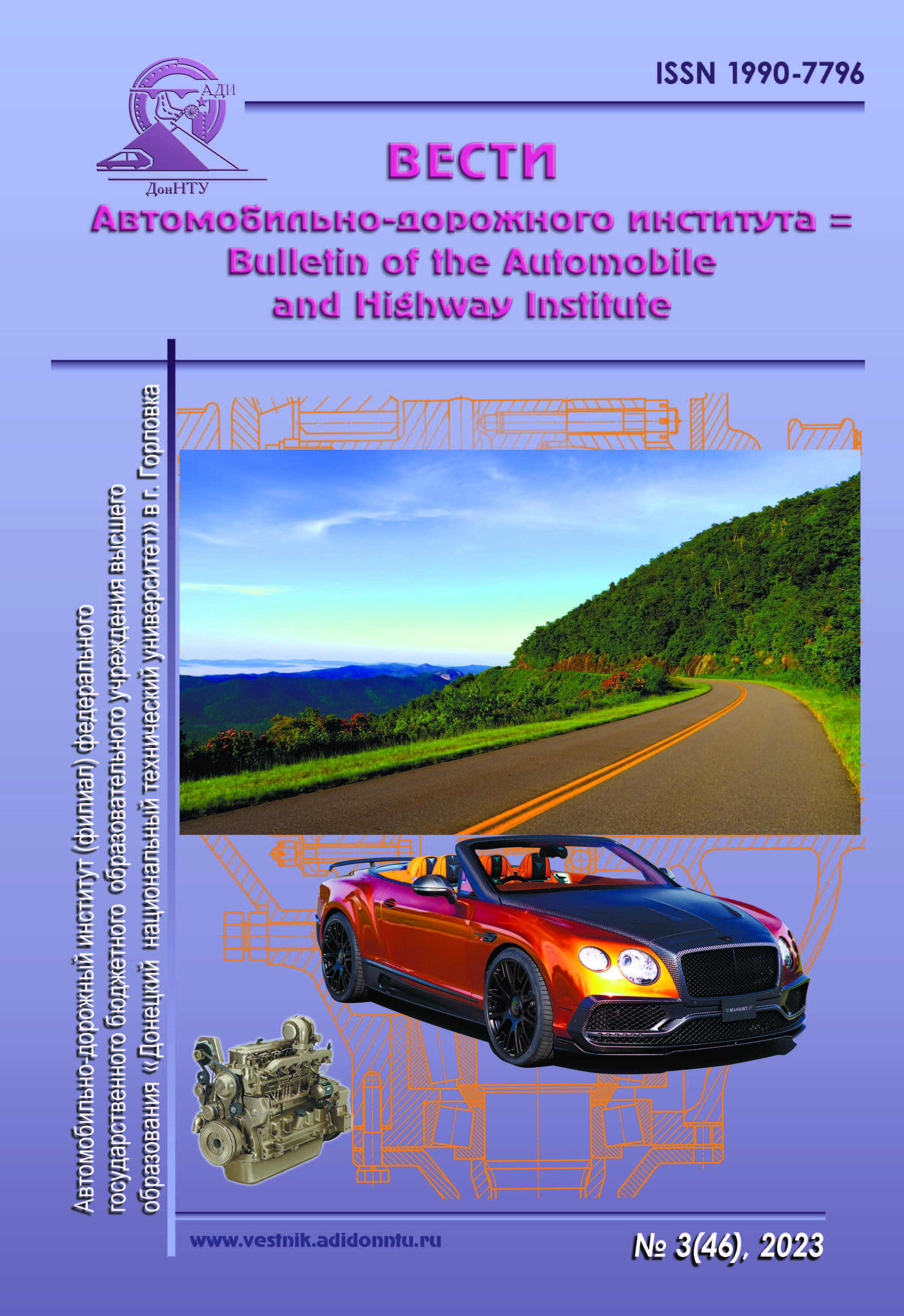Time Spent on City Bus Routes
Keywords:
TIME COST, TIME BUDGET, FACTOR, BUS ROUTE, WAITING TIME, TRANSPORT SERVICE QUALITY, ROLLING STOCK CHOICEAbstract
Passenger transport is one of the most important life support sectors of the city, the functioning of which determines both the operation of the economic complex and the quality of life of the population. Regardless of the social status, the majority of residents prefer to move around the city by public passenger transport. The main purpose of urban passenger transport is to transport the population between centers of transport gravity, which include various entertainment complexes, shopping centers, various enterprises, organizations, sports and consumer institutions, etc. As a result of the growth of cities, when their territorial size exceeds the pedestrian accessibility zone of the city center, there is an urgent need for urban passenger transport. Typically, the pedestrian accessibility zone is taken to be within a 30-minute walk, with a maximum radius of 2 km. The development of modern cities is directly accompanied by an increase in their territory, the removal of residential areas from places of employment and, of course, the migration of the population to new residential outskirts.
The consequence of all this is an increase in the distance and time required for passengers to travel from their place of residence to work, an increase in the population that uses public transport, and an increase in the average number of trips per resident per year. For this purpose, the work identifies and examines in detail the factors that influence the time spent on the movement of passengers in urban public bus transport. To minimize the time spent on the movement of passengers, it is proposed to pay attention to such an issue as the choice of rolling stock for operation on city bus routes. The existing approach to solving this issue has its drawbacks. According to it, on bus routes with high capacity, high-capacity rolling stock is most often selected, which leads to an increase in the interval of buses on the route and, accordingly, idle time for passengers at stops. It turns out that the selected rolling stock does not fully justify its performance. Therefore, the issue of improving the methodology for selecting rolling stock for operation on city bus routes requires further consideration. The improvement will consist in the choice of two types of rolling stock of higher and lower capacity for high-capacity bus routes.
The measures proposed in the work will help highlight «bottlenecks» in the organization of urban passenger transportation by public bus transport and improve the level of quality of transport services for passengers.
References
Оптимизация сетей общественного транспорта городов / С. Н. Ткаченко, А. В. Паршков, А. А. Кураксин [и др.]. – Текст : электронный // Транспорт Российской Федерации. – 2017. – № 2(69). – С. 59–62. – URL: https://elibrary.ru/item.asp?id=29045796 .
Мочалин, С. М. Перспективы развития методов оптимизации маршрутных сетей городского пассажирского транспорта / С. М. Мочалин, Ю. А. Колебер. – Текст : электронный // Вестник СибАДИ. – 2019. – Т. 16, № 3(67). – С. 242–255. – URL: https://vestnik.sibadi.org/jour/article/view/879 .
Власов, А. А. Управление насыщенными транспортными потоками в городах : монография / А. А. Власов, Н. А. Орлов. – Пенза : ПГУАС, 2014. – 187 с. – ISBN 978-5-9282-1133-2.
Исследование пассажиропотоков и транспортной подвижности населения в городе Орле / А. Н. Новиков, С. Ю. Радченко,
А. Л. Севостьянов [и др.] // Мир транспорта и технологических машин. – 2011. – № 4(35). – С. 69–77.
Кошимова, М. А. Роль и значение городского пассажирского транспорта в экономике региона / М. А. Кошимова. – Текст : электронный // Вестник КазНУ. Серия экономическая. – 2014. – № 2(102). – URL: https://articlekz.com/article/8795 .
Спирин, И. В. Определение затрат времени пассажиров на поездки в городах / И. В. Спирин // Мир транспорта. – 2020. – Т. 18, № 3(88). –
С. 28–43.
Пазылидинов, И. А. Исследование и оптимизация городских автобусных перевозок на примере пассажирского автотранспортного предприятия АП-3 г. Екатерингбурга : выпускная квалификационная работа магистра ; пояснительная записка № 230403C2400600 ПЗ /
И. А. Пазылидинов. – Текст : электронный. – URL: https://elar.urfu.ru/bitstream/10995/60143/1/m_th_i.a.pazylidinov_2018.pdf .
Применение интеллектуальных транспортных систем (ИТС) для повышения эффективности функционирования городского общественного транспорта / А. Н. Новиков, А. Л. Севостьянов, А. А. Катунин, А. В. Кулев // Мир транспорта и технологических машин. – 2013. – № 1(40). –
С. 85–90.
Никаноров, Р. О. Методы повышения рентабельности услуг на предприятиях автомобильного транспорта / Р. О. Никаноров,
Л. А. Иванченко // Актуальные проблемы авиации и космонавтики. – 2015. – Т. 2, № 11. – С. 587–589.
Остапчук, В. Н. К вопросу о снижении убыточности пассажирских перевозок / В. Н. Остапчук. – Бюллетень научных работ Брянского филиала МИИТ. – 2014. – № 1(5). – С. 38–40.
Селезнева, Н. А. Структура управления пассажирскими перевозками на городских автобусных маршрутах / Н. А. Селезнева, Ю. В. Шеина // Научно-технические аспекты развития автотранспортного комплекса 2020 : материалы VI международной научно-практической конференции в рамках 6-го Международного научного форума Донецкой Народной Республики «Инновационные перспективы Донбасса: инфраструктурное и социально-экономическое развитие», Горловка, 27 мая 2020. – Горловка : АДИ ГОУВПО «ДОННТУ», 2020. – С. 136–141.
Селезнева, Н. А. Эффективное управление пассажирскими перевозками на городских автобусных маршрутах / Н. А. Селезнева, В. А. Тятых // Актуальные вопросы экономики и управления: теоретические и прикладные аспекты : материалы Пятой международной научно-практической конференции, Горловка, 20 марта 2020 г. В 3 частях. Часть 2. – Донецк : ДОННТУ, 2020. – С. 207–213.


